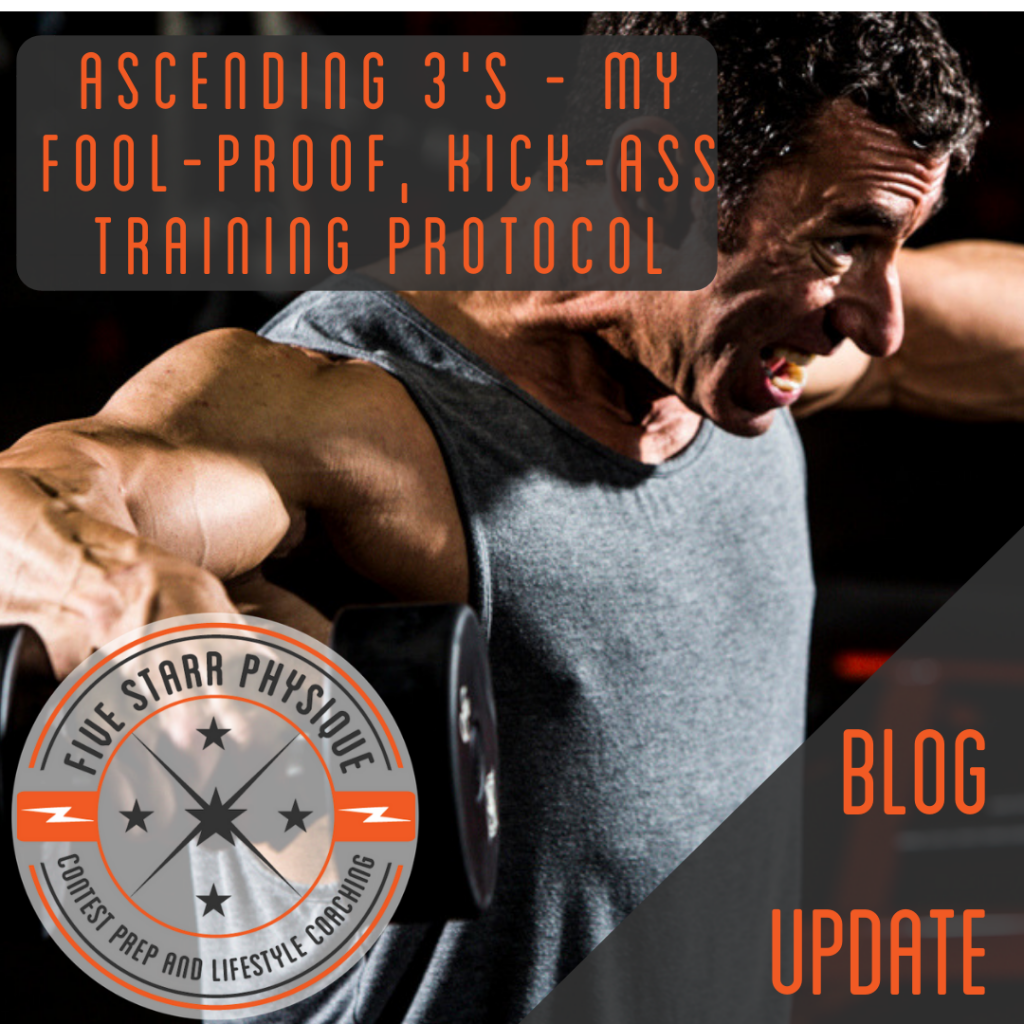
Bodybuilders are always looking for an edge. Whether it’s a change in their diet, some new supplement, a new workout program or a magical pair of shorts that will help your quads grow, we tend to grasp at straws and leaving nothing to chance – we’re going to try everything. Eventually we all (hopefully) realize that in the end, it’s all about the work that you put in and the effort you exert every single day.
So over time we build a library of tricks and tactics we can employ to help put a nice punctuation mark on an exercise or a workout. These are things like drop sets, rest/pause sets, partial reps, forced reps, forced negatives, manual resistance…the list goes on and on.
“These ascending 3’s are a creation of cruel genius. I haven’t been this muscularly sore since the first week of training back in October.” – Chris W.
How these old tactics can be problematic
Most of these techniques have downsides: they’re either ambiguous with no real “guidelines” on how best to use them, they employ an over-reliance on the term “failure” which means less and less the more you rely on it, or they really work best with a partner which doesn’t help you at all when you lift alone.
Also, all of the above tactics are what I would consider “advanced” – take someone with a bit of gym experience (not years and years, but not a fresh-faced peach either), and no matter how thoroughly I explain how to perform a drop set, the execution is never really there. A drop set DEPENDS upon a firm understanding of the concept of failure, and if you stop and reduce weight just because it gets uncomfortable you’ll find you get nowhere with that tactic. People also fall into the habit of counting their reps and relying on that:
Ok, that’s 10 reps…now I guess I’ll drop the weight and do 10 more….this is kinda easy, but ok there’s 10, now let’s drop again and do 10 more…man, this is really light….
This is what a drop set typically looks (and feels) like the first time you do one. That’s not a tactic that’s going to force anything to grow. Same with rest/pause. Same with forced reps (cheating ’em up before you REALLY need to). It’s just so ambiguous, and for someone relatively new to lifting (even with a couple years under your belt you can still be “new”), that internal “intensity scale” needs some serious calibration work so that you truly understand what FAILURE feels like.
Enter Ascending 3’s
To be clear, if you’re new to the gym you don’t necessarily need any special tactics like this. You can grow just with solid lifting fundamentals.
BUT, if you can learn how to pull something like this off effectively, it’s going to open your eyes to what REAL muscle growth and intensity feels like. That can have a massive effect of re-calibrating your entire concept of work and can help make everything you do after that more effectively and more impactful.
As a contest prep coach, I’m always trying to come up with the best tactics to help my clients grow. So it was my goal to design something that would be absolutely brutal for very advanced and experienced lifters while simultaneously making it easy for new lifters to follow with minimal guesswork.
I present to you: Ascending 3’s
The goal here is several things:
- Work the muscle in a range ideal for hypertrophy (growth)
- Maximize recruitment of all muscle fiber types
- Force progressive overload over the course of one set
- Employ a calculated drop set as a nice finishing touch
The concept and execution is pretty simple. After you’ve done it once, it’s a formula that is easily repeatable in the future and you can improve upon your performance over time as well.
First: pick an appropriate exercise to do this with. The best candidates are dumbbell exercises performed standing (curls, lateral raises, front raises, reverse flys, etc) or selectorized machines (as opposed to plate-loaded). Barbell or plate-loaded machine exercises are too cumbersome and slow, though with a fast partner or two and creative use of plates you could make that work in some cases as well.
Most of the dumbbell exercises you’ll use are going to be on the lower end of the DB rack (lighter) – so if the DB’s in your gym go up in 2.5lb increments (as opposed to 5lb increments), this is going to hurt a LOT more and will be more effective.
How it works
This is one of those “seems complicated, but isn’t” things. Here it is:
- Pick an appropriate exercises and do your working sets in the 10-15 rep range
- After your final set, rest 20 seconds then pick up the last weight you used.
- Perform 3 more reps
- Immediately go up in weight by the smallest possible increment. Perform 3 reps there.
- Repeat step 4 until you reach absolute and total contractile failure
- At whatever weight you reach, immediately reduce to just under half that weight, and rep it out to absolute failure (this is going to hurt).
- Try not to die.
As you are going through steps 4 and 5 in a loop, you’ll notice that your reps are likely going to start getting a little sloppy.
That is ok. And kind of necessary.
If you’re curling, you’re going to start cheating those reps. For lateral raises, your range of motion is going to shorten a bit. Let it happen – fight it and make the reps as clean as you can, but let it go a bit. We’re defining “failure” as a total inability to move the weight – since we’re increasing the weight every 3 reps, you’re actually going to hit failure instead of just feeling like it’s awful, everything burns, and please just chop off this body part because that will probably hurt less. It’s the act of actually reaching contractile failure that makes this different.
Additional notes
Also, read step 4 carefully and make note of the words “smallest increment possible” – this is where 2.5lb increment DB’s are helpful, or if performing an exercise on a selectorized machine making use of the little “add-on” weights in 2.5 or 5 lb jumps.
The more different weights you can use and bang out 3 reps at each step along the way, the more productive this technique gets
So if you’re performing a lat pulldown and are working at (example) 80 pounds – if you have the ability to then go to 85, 90, 95, 100, 105, 110, 115, etc, performing just 3 reps at each step along the way, you will be sending some VERY STRONG growth signals to the muscle you’re targeting. And yes, some of those higher weights are going to get sloppy, but when you hit that failure point you will know it. That first rep will feel impossible – and that’s when you know you’re done.
Except then you’ve gotta reduce weight and hit as many reps as you can – don’t forget step 6!
Bring it on home
Ascending 3’s is another tool for your belt of gym tactics, but it’s more than that as well because it will help you learn what real failure, real discomfort, and a real pump feels like.
Give it a shot and you won’t regret it!
